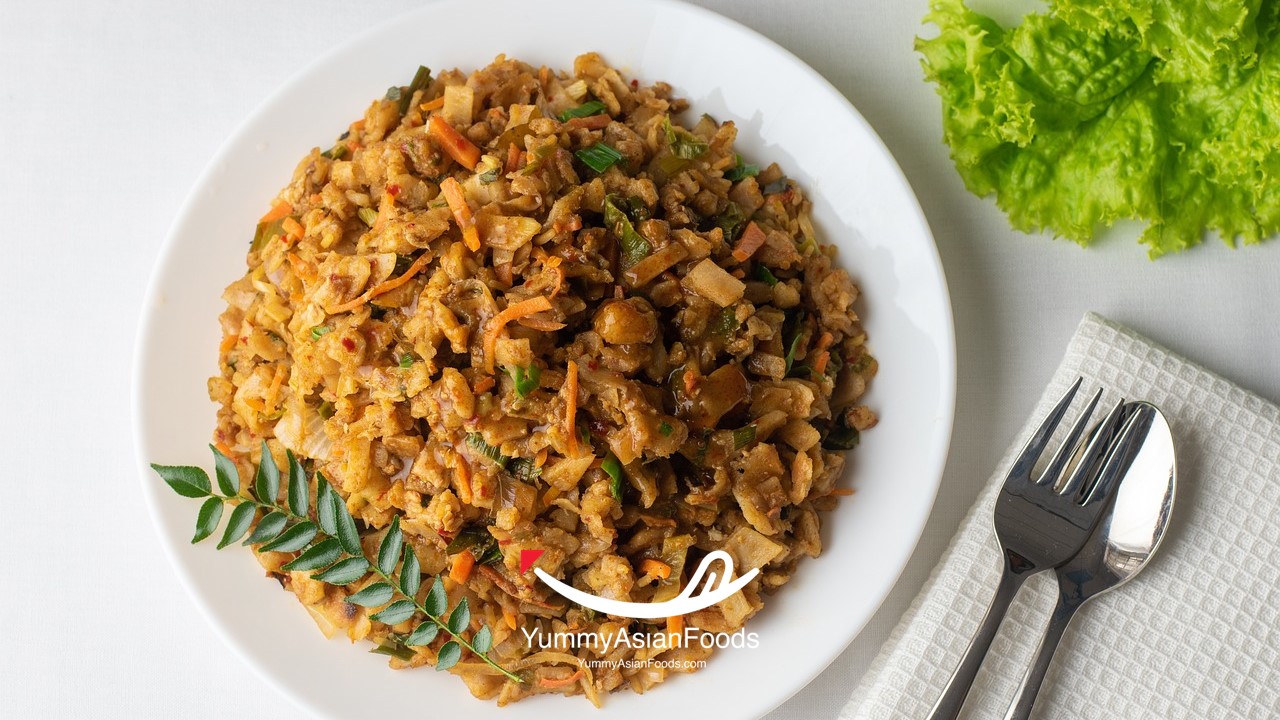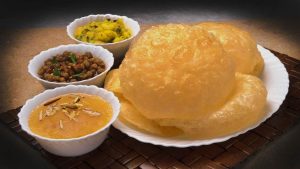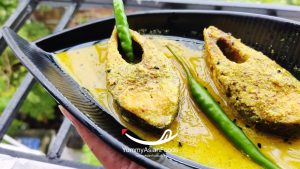Table of Contents
ToggleIf you’ve ever strolled through the bustling streets of Sri Lanka, chances are you’ve been tantalized by the irresistible aroma wafting from street food stalls. Amidst the symphony of sizzling pans and clinking utensils, one dish reigns supreme: the iconic Sri Lankan Kottu. This beloved street food delicacy is not just a meal; it’s an experience that embodies the rich tapestry of flavors and spices that make Sri Lankan cuisine so renowned worldwide. Today, we’re unlocking the secrets to mastering this culinary gem in just 4 simple steps, bringing a taste of vibrant Colombo straight to your kitchen. So grab your apron and get ready to embark on a flavorful journey as we uncover the art of creating authentic Sri Lankan Kottu right in your own home!
What is Sri Lankan Kottu Dish
Sri Lankan Kottu dish, a beloved street food sensation, is not just a breakfast, lunch, or dinner meal but an experience. This unique dish consists of chopped roti or paratha bread stir-fried with vegetables, eggs, and a choice of meat or seafood. What sets it apart is the mesmerizing sound of metal plates clashing together as the skilled chefs expertly chop and mix the ingredients on a hot griddle.
The essence of Sri Lankan Kottu lies in its flavorful combination of spices, such as curry powder, turmeric, and chili peppers, creating a symphony for the taste buds. Each bite offers a delightful crunch from the crispy roti intermingled with tender meat or seafood and vibrant vegetables. The aroma wafting from street-side stalls where this dish is prepared adds to its allure, inviting passersby to indulge in its mouth-watering goodness.

What are the Ingredients for Sri Lankan Kottu Dish
One of the key ingredients that gives Sri Lankan Kottu its unique flavor and texture is godhamba roti, a type of flatbread that is shredded and mixed with a variety of vegetables, eggs, and meats. This popular street food dish also typically includes spices such as curry powder, chili flakes, and turmeric to enhance its taste profile. Sliced onions and finely chopped green chilies are often used to add a touch of heat and crunch to the dish.
In addition to staples like roti and spices, protein sources like chicken, beef, or mutton are commonly included in Sri Lankan Kottu for added richness and depth of flavor. Some variations of the dish may include seafood such as shrimp or fish for a delightful twist on this traditional comfort food. Garnishes such as fresh coriander leaves or a squeeze of lime juice can elevate the flavors even further by providing a refreshing contrast to the savory components.

How to Cook Authentic Sri Lankan Kottu Dish
To truly capture the essence of an authentic Sri Lankan Kottu dish, it is crucial to master the art of chopping and mixing the ingredients with precision. The rhythmic clanging of metal spatulas against the hot griddle creates a symphony of flavors as vegetables, spices, and roti are expertly combined. This unique sound is not just music to the ears but also sets the stage for a mouthwatering culinary experience.
The secret lies in balancing texture and taste—achieving that perfect blend of soft roti pieces with crunchy vegetables and well-seasoned meat or seafood. Each bite should unfold layers of complexity, revealing the rich heritage and diverse influences that have shaped Sri Lankan cuisine over centuries. The final touch comes in the form of a generous drizzle of aromatic curry sauce, infusing every morsel with warmth and depth of flavor that lingers long after the last bite is savored.

Here are 4 Simple Steps to Cook Authentic Sri Lankan Kottu Dish
Step 1: Gathering ingredients for Sri Lankan Kottu preparation
As you embark on your culinary journey to prepare an authentic Sri Lankan Kottu dish, the first step is gathering the essential ingredients that will bring this flavorful dish to life. The key components typically include thin strips of roti bread, vegetables like carrots, cabbage, and leeks, along with protein options such as chicken or beef. Don’t forget to source fragrant spices like turmeric, cumin, and curry leaves to infuse the dish with traditional Sri Lankan flavors.
The beauty of Sri Lankan cuisine lies in its use of fresh and vibrant ingredients that come together harmoniously to create a burst of flavor in every bite. Whether you are exploring the local market for these ingredients or opting for a more modern approach by shopping online for specialty items, ensure that the quality and freshness of each component are top-notch. By paying attention to detail in ingredient selection, you are setting yourself up for success in preparing a Kottu dish that truly honors the rich culinary heritage of Sri Lanka.
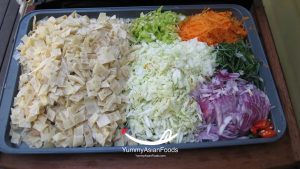
Step 2: Preparing the roti and vegetables for Sri Lankan Kottu
Once the roti is ready, it’s time to prepare the vegetables for your Sri Lankan Kottu. The beauty of this dish lies in its versatility, so feel free to use any combination of vegetables that you prefer. Traditional choices include carrots, cabbage, bell peppers, and onions. Don’t be afraid to experiment with different textures and flavors to create a unique twist on this classic dish.
Cut the vegetables into small, bite-sized pieces to ensure even cooking and easy mixing with the shredded roti. A tip for adding an extra layer of flavor is sautéing the vegetables in a blend of aromatic spices like turmeric, cumin, and mustard seeds before incorporating them into the kottu. This step not only enhances the taste but also fills your kitchen with delightful fragrances that will make your mouth water as you eagerly await your delicious meal.
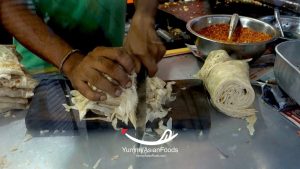
Step 3: Cooking the Sri Lankan Kottu with spices and meat
Once the vegetables are tender and the roti pieces have absorbed the flavors of the spices, it’s time to add your choice of meat. Traditional Sri Lankan kottu often includes chicken, beef, or seafood for a hearty and flavorful addition. The sizzle of the hot griddle as you toss in your protein creates a symphony of aromas that will have your mouth watering in anticipation.
The key to achieving that perfect balance of flavors lies in how well you incorporate the spices with the meat and vegetables. For an extra kick, consider adding some sliced green chilies or crushed red pepper flakes for a spicy twist that will elevate your kottu to new heights. Remember not to overcook the meat; retaining its juiciness will ensure each bite is bursting with succulent goodness.

Step 4: Serving and enjoying the authentic Sri Lankan Kottu dish
As you approach the final step of serving and savoring the delightful Sri Lankan Kottu dish, prepare to be immersed in a symphony of aromas and flavors. The sound of metal spatulas rhythmically chopping and mixing the ingredients on a hot griddle is as much a part of the experience as the taste itself.
Once your Kottu is skillfully prepared, transfer it to a plate or banana leaf for an authentic touch. Garnish with fresh lime wedges and crunchy papadams for that extra burst of flavor and texture. Take your first bite, letting the medley of spices dance on your taste buds, offering a true sensory delight unique to Sri Lankan cuisine.
Allow yourself to fully indulge in this rich culinary experience that not only nourishes your body but also feeds your soul with its vibrant colors and complex flavors. Let each mouthful transport you to the bustling streets of Colombo or Galle, where vendors expertly create this beloved dish day in and day out. Embrace every moment as you relish this iconic Sri Lankan treasure that embodies tradition, community, and pure gastronomic joy.

Origin of Kottu Dish in Sri Lanka
The origins of the popular Sri Lankan dish, Kottu, are as fascinating as the flavors it boasts. Widely believed to have originated from the bustling streets of Colombo, Kottu is a street food sensation that has now become a staple in Sri Lankan cuisine. Legend has it that Kottu was first created by resourceful chefs who repurposed leftover roti and mixed it with vegetables, meat, and spices to create a flavorful and hearty meal.
While its exact beginnings may be shrouded in mystery, one thing is clear: Kottu represents the ingenuity and adaptability of Sri Lankan culinary traditions. Over time, Kottu has evolved into various regional variations across the country, each boasting its own unique blend of ingredients and spices. From humble beginnings on roadside griddles to fine dining establishments serving gourmet versions of this beloved dish, Kottu has truly captured the essence of Sri Lankan cuisine—rich in history, flavor, and innovation.

Variations of Sri Lankan Kottu Dish: Chicken, beef, vegetarian options
The beauty of Sri Lankan Kottu lies in its versatility, offering a range of variations to cater to different palates. Chicken Kottu, with tender chunks of flavorful chicken mixed with roti pieces and an array of spices, delivers a satisfying blend of textures and tastes that make it a popular choice among meat lovers. On the other hand, Beef Kottu brings a rich depth of flavor with succulent beef slices combined with finely chopped vegetables and aromatic spices, creating a hearty and filling meal that embodies true comfort food.
For those seeking vegetarian options, Vegetable Kottu is a delightful medley of colorful vegetables like carrots, bell peppers, and cabbage stir-fried with roti strips and an assortment of spices. This vegetarian version offers a lighter yet equally delicious alternative without compromising on taste or satisfaction. Whatever your preference may be—chicken, beef, or vegetarian—Sri Lankan Kottu has something to offer for everyone, showcasing the rich culinary heritage and diverse flavors of this vibrant island nation.
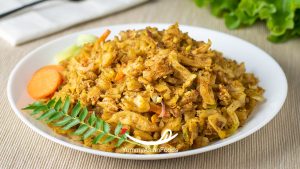
Serving and Accompaniments: Served hot with curry or chutney
When it comes to serving Sri Lankan Kottu dishes, the choice of accompaniments can truly elevate the experience. Whether you prefer your kottu served with a piping hot bowl of curry or a tangy chutney, the flavors come alive in each bite. The rich and robust spices in the curry complement the savory notes of the kottu, creating a symphony of tastes that tantalize your taste buds. On the other hand, a zesty chutney adds a burst of freshness and acidity that cuts through the richness of the dish, offering a delightful contrast in flavors.
The art of pairing kottu with different accompaniments lies in finding that perfect balance between heat, spice, and tanginess. While some may swear by the traditional combination of curry and kottu, others may find joy in experimenting with unconventional pairings like mint or tamarind chutney. Whether you opt for creamy coconut-based curries or fiery tomato-based ones, each serving style has its own unique charm that adds depth to this beloved Sri Lankan street food classic. Embrace your culinary creativity and embark on a flavor-packed journey as you explore various accompaniments to savor alongside your steaming plate of kottu.

Serving Suggestions: Best accompaniments to enjoy with Kottu
When it comes to enjoying a plate of flavorful Sri Lankan Kottu, the accompaniments can truly enhance the dining experience. Traditionally, Kottu is often served with a side of spicy curry sauce or tangy lime pickle, both of which add an extra layer of depth to the dish. The creamy coconut sambal also pairs beautifully with the spiciness of Kottu, offering a cool and refreshing contrast that balances out the flavors perfectly.
If you’re looking to elevate your Kottu meal even further, consider adding some crunchy papadums on the side for a delightful textural contrast. Another popular accompaniment is a fresh cucumber salad with thinly sliced onions and tomatoes dressed in a zesty vinaigrette dressing. This light and crisp salad provides a refreshing break from the richness of the main dish. By experimenting with different accompaniments, you can create a personalized dining experience that suits your palate and brings out the best in this beloved Sri Lankan comfort food.

Storage of Sri Lankan Kottu During Takeaways or Takeout
When it comes to taking away Sri Lankan Kottu, proper storage is key to maintaining its delicious flavors and textures. One common issue during takeout is the sogginess that can develop if not stored correctly. To combat this, make sure the Kottu is packed separately from any accompanying sauces or condiments. This separation prevents the dish from becoming overly moist before reaching its destination.
Additionally, consider requesting extra packaging for your Kottu takeaway order. Having multiple layers of wrapping or containers can help insulate the dish and preserve its heat and freshness during transportation. This extra care in packaging ensures that your Sri Lankan Kottu remains as tasty and satisfying as when it was first prepared, allowing you to enjoy an authentic dining experience even outside of a traditional restaurant setting.
What is the Shelf Life of a Takeout Sri Lankan Kottu Dish (Fridge and Unfridge)?
When it comes to the shelf life of a takeout Sri Lankan kottu dish, whether it is stored in the fridge or left unfridged, there are key factors to consider. In general, when kept in the fridge at a consistent temperature of 40°F or below, a typical kottu dish can be safely consumed within 3-4 days. However, if left unfridged for more than 2 hours after cooking, the risk of bacterial contamination increases significantly.
It’s important to note that certain ingredients in kottu dishes may have varied shelf lives. While vegetables and meats should ideally be consumed within a few days of preparation, even when refrigerated, sauces with high acidity levels tend to have longer shelf lives. To ensure food safety and optimal taste quality, always use your judgment before consuming any leftover takeout Sri Lankan kottu dish, and trust your senses when assessing its freshness. Remember that proper storage and handling practices are crucial in extending the shelf life of any food item—even your favorite authentic Kottu dish!
Wrapping Up: 4 Simple Steps to Cook Authentic Sri Lankan Kottu Dish
In conclusion, mastering the art of cooking an authentic Sri Lankan Kottu dish involves a harmonious blend of flavors, textures, and techniques. By following the four simple steps outlined in this guide, you can recreate the vibrant and flavorful experience of enjoying this popular street food right in your own kitchen.
Remember that the key to a successful Kottu dish lies in using fresh ingredients, cutting them with precision, and sautéing them to perfection. Embrace the sounds and sights of sizzling metal blades and clashing spatulas as you chop away at the roti bread and watch it transform into a delicious medley of spices, vegetables, and protein.
So next time you crave a taste of Sri Lanka or simply want to impress your guests with an exotic culinary creation, don’t hesitate to try your hand at making this beloved comfort food. Let each step be a testament to your commitment to authenticity and flavor as you embark on this gastronomic journey through the heart of Sri Lankan cuisine.

